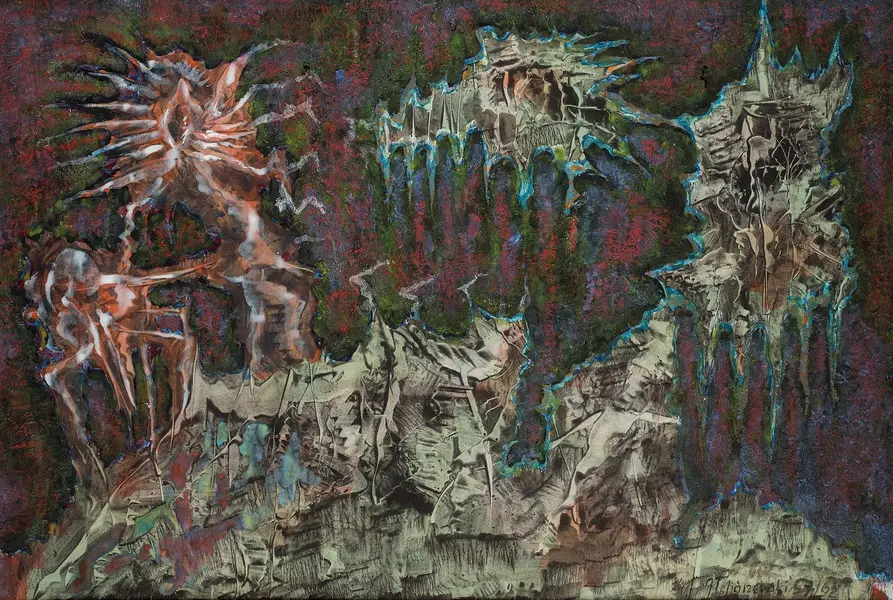


The Cracow Group is an association founded by students of the Academy of Fine Arts in Cracow. The organization’s activity is divided into two groups, the first of which was active before World War II, whereas the second was established at the end of the 1950s. The artists associated with the Group shared leftist artistic and political views. They criticized traditional academicism, with which the school curriculum was saturated, instead proposing innovative avant-garde art whose output escapes clear classification.
The creation of the Cracow Group I was artists' response to the academic teaching methods which they disagreed with, as well as the political situation in Poland and abroad. The members of the group aimed to influence reality through artistic activity, considering their art to be "revolutionary" – capable of bringing about social and political change. Cracow Group I was inspired by the Kapists' painting, the culture of the provinces and the tradition of the Eastern Borderlands. The foreign works of Chagall, Léger and Grosz were also undoubtedly important to them. The group maintained contacts with the Artes association from Lviv, revolutionary artists from Łódź (the a.r. group), and with Leon Chwistek and with Władysław Strzemiński and Katarzyna Kobro.
Members of the Cracow Group I included: Maria Jarema, Jonasz Stern, Andrzej Stopka, Henryk Wiciński, Janusz Woźniakowski, Aleksander (Sasza) Blonder, Adam Marczyński.
Cracow Group II was founded in 1957, 20 years after the First Group split up. Interestingly, it was never formally dissolved. The formation of the group's members and the views promoted by the artists began as soon as the early 1940s, during the activities of the Krakow Underground Experimental Theatre managed by Tadeusz Kantor. The Cracow Group included artists from the Group of Young Visual Artists (who collaborated with Kantor) and members of the Krakow Artists' Club (KP) founded a few years later.
The most important artists and creators of the second Cracow Group include the artistic "core" consisting of Brzozowski, Maria Jarema, Tadeusz Kantor, Maziarska, Mikulski, Nowosielski, Rosenstein, Skarżyński, Stern and Jerzy Tchórzewski, Janina Kraupe-Świderska, Andrzej Pawłowski, Teresa Rudowicz, Jan Tarasin, Jerzy Bereś, Maria Pinińska-Bereś and Maria Stangret, among others.